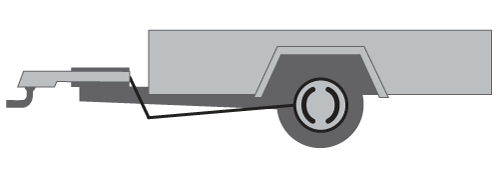How does the overrun brake work?
The overrun brake makes up, together with the brake transference and the wheel brake, the brake system on a trailer.
The coupling is mounted fast on the chassis via draw members the run up to the coupling. The coupling consists of a “housing” and in the “housing” is a drawtube. The drawtube is fixed in the car via the coupling head, while it is not completely fixed in the coupling, but can move back and forth a few centimetres. When the car accelerates the drawtube is pulled out and when the speed decreases the drawtube is pushed in inside the coupling. In order for the drawtube to glide evenly and easily it moves in special bushes, while there is a coupling damper or vibration damper as it is sometimes known, that prevents the drawtube from jerking and which slows down the drawtube’s movements.
At the end of the drawtube sits a lever (brake operating lever) which converts the drawtube’s pushing motion to a pulling motion. This movement is transferred via the brake transference to the wheel brakes, and the brake mechanism is activated. Friction the results between the brake drum and the brake shoes, so that the speed of the trailer decreases.
The coupling also has a handbrake lever so that you can manually tension the brake operating lever, so that the brakes are applied when you detach the trailer from the car.


